Although you’ll find omega-3s in many different foods and supplements, some sources are superior
Omega-3 and omega-6 fats are essential. Unlike other fats that the body can produce when it needs to, by converting fats stored in fat-reserves, the body cannot produce omega-3 or 6 fats. So it’s imperative that these two fats are ingested from dietary sources or supplements. Therefore, omega-3 and 6 fats are called essential fats.
Omega-3 vs omega-6
Omega-3 and omega-6 fats have opposite effects in the body. For example, omega-3s relieve inflammation and thin the blood, whereas omega-6s cause inflammation and increase blood clotting. Although the effects of omega-6 fats are needed occasionally, if there’s too much omega-6 compared to omega-3 in the diet, then the body will begin to release too many inflammatory chemicals, which can lead to heart disease, cancer, a faulty immune system and insulin resistance, which can cause weight gain and diabetes.
The problem is that most of us get far too much omega-6 in our diets. Therefore, to supplement with additional omega-6 isn’t a good idea as this could contribute to further health problems. There is one exception to this rule: there’s a rare type of omega-6 that’s fine to take in specific conditions such as allergies or hormonal problems. This type of omega-6, known as GLA (gammalinolenic acid), found in borage seed oil and evening primrose oil, is different to the type of omega-6 that our diets contain too much of. As a general rule, don’t supplement with omega-6 but do supplement with omega-3, because most of us don’t get enough omega-3 fats in our diets.
Health benefits of omega-3
Omega-3 is probably the single most important supplement you should be taking – more important than supplementing with vitamins, minerals, probiotics or phytonutrients. This is because the lack of dietary omega-3 dwarfs any deficiency of other nutrients. Omega-3s help to prevent the biggest chronic disease killers, namely heart disease, cancer and diabetes. They also help to prevent arthritis, protect your eyes and keep your immune system functioning properly. Omega-3s are also responsible for keeping your brain sharp and your mood happy. But there are three types of omega-3s – from plant, fish and krill sources. Which one is best?
Plant oil – good, but the worst of the three
Plant omega-3s are found in flaxseeds, hemp seeds and chia seeds, as well as tree nuts such as walnuts, pecans and almonds (not peanuts, which actually aren’t nuts at all; they are legumes and full of omega-6s). The type of omega-3 in plants is known as ALA (alpha-linolenic acid), which is inactive, although it’s better than nothing. The body first needs to convert ALA into the active forms, known as EPA (eicosapentaenoic acid) and DHA (docosahexaenoic acid), which are responsible for omega-3’s health benefits. This conversion process is very slow, and is made even slower by omega-6s, which block the enzymes that perform the conversion.
The result is that no matter how much omega-3 from plants you consume, your body is unlikely to produce enough active EPA and DHA from this. All that will happen is that you will simply build up excessive amounts of inactive, and therefore useless, ALA in your fat reserves.
Fish oil – better, but not the best
Fish oil already contains active EPA and DHA forms of omega-3, so the body doesn’t have to convert it. This means that it’s very easy to obtain optimal amounts of EPA and DHA from fish oil. But the reason that fish oil is not the best is because its EPA and DHA are in the form of a triglyceride fat molecule that’s not water-soluble. This makes it more difficult for the molecule to enter into the cells and tissues of the body where it’s needed. Therefore, instead of entering brain, heart or immune system cells, many of these triglyceride-form omega-3s are stored in fat cells and used as an energy supply instead.
Krill oil – better than plant and fish
Krill are tiny omega-3-rich crustaceans that thrive in the pristine waters of the Antarctic ocean. Unlike fish, they aren’t harvested in polluted or industrialised waters, so they are naturally low in toxins. Like fish, krill oil also contains active EPA and DHA forms of omega-3 and therefore does not require conversion by the body.
But that’s where the similarity ends. The reason that krill oil is superior to fish oil is because its EPA and DHA omega-3s are in the form of a water and fat-soluble phospholipid, not a triglyceride. This means that it can easily cross cell membranes into the interior of immune, brain, heart and other cells of the body where it’s needed to exert its effects. The result is much better absorption, greater effectiveness and more rapid effects – with noticeable effects after a few days, instead of a few months. In addition to omega-3s, krill oil also supplies phospholipids such as phosphatidyl-serine and phosphatidyl-choline, which are powerful liver protectors and body detoxifiers. They also boost levels of serotonin and dopamine brain chemicals, which are responsible for good mood. Finally, unique to krill oil is an antioxidant called astaxanthin. This antioxidant gives krill oil its deep red colour. Astaxanthin helps to prevent many chronic diseases, and is being studied for its anti-ageing effects on the body and skin.
Is krill harvesting sustainable and eco-friendly?
Some people are concerned that the harvesting of krill could negatively impact the food supply of whales and other animals that eat krill, but there’s no need for concern. To give you an idea of the negligible impact that krill fishing has on krill reserves, here are some statistics:
- Total mass of krill in the Antarctic ocean at any time: 400 million tons.
- Total consumed by all animals: 48 million tons per year.
- Total fished for human consumption: 0,2 million tons.
0,05% of the krill population per year. This amount is well below Convention on the Conservation of Antarctic Marine Living Resources (CCAMLR) quota limits to which all krill harvesters have to adhere. The full amount consumed by animals and harvested by humans is renewed each and every year, automatically by mother earth. So there’s zero negative impact on krill reserves.
But most important, as is always the case with food supply, food consumed from the bottom of the food chain represents the most efficient and renewable use of energy, and is the least burdensome on the earth’s resources. Eating from the bottom of the food chain (for example, krill, algae, insects, vegetables) produces the lowest amount of greenhouse gasses and uses the least amount of water per kilogram of protein and fat produced in the food.
That’s why krill, algae and insects are the most ecoresponsible and least impactful food sources; next are vegetables; and last of all, animals such as fish, chicken and beef, which represent a huge burden on the environment in terms of energy transfer (CO2 production) and water demand. Fish (which produces fish oil) is actually under more threat than krill (which is under zero threat).
There is one downside to krill oil, though, and that is cost. Krill oil costs double that of fish oil and plant omega-3s, but given that it’s so much more effective, this may be money well spent.
So if you’re looking for the best type of omega-3 possible, and the one that is the most environmentally sustainable, maybe it’s time to change to krill oil.




